Jobs and education
Celebrating Black History Month in US
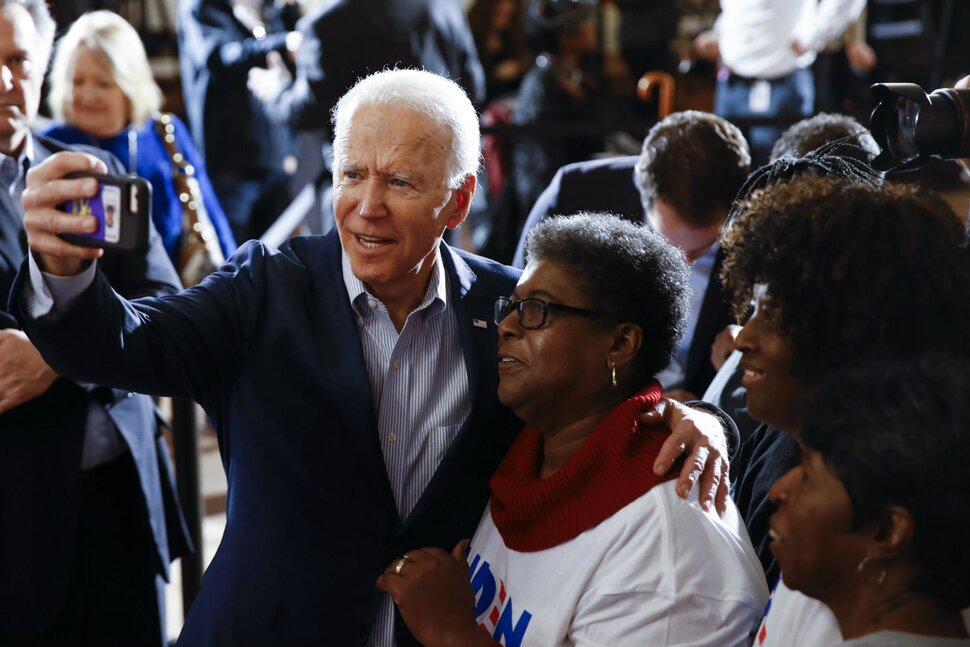
Introduction:
This week was chosen because it includes the birthdays of both Frederick Douglass. An abolitionist (someone who wanted to end the practice of enslaving people), and former U.S. president Abraham Lincoln. President Lincoln led the United States during the Civil War. Which was primarily fought over the enslavement of Black people in the country. Many schools and leaders began recognizing the week after its creation. The week-long event officially became Black History Month in 1976 when U.S. president Gerald Ford extended the recognition to “honor the too-often neglected accomplishments of Black Americans in every area of endeavor throughout our history.” Black History Month has been celebrated in the United States every February since.
HOW Its STARTED Black History Month:
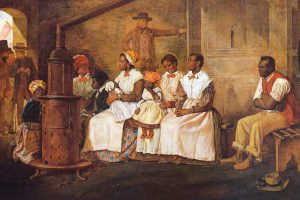
Image by:nmaahc.si.edu
In 1915, in response to the lack of information on the accomplishments of Black people available to the public, historian Carter G. Woodson co-founded the Association for the Study of Negro Life and History. In 1926, the group declared the second week of February as “Negro History Week” to recognize the contributions of African Americans to U.S. history. Few people studied Black history and it wasn’t included in textbooks prior to the creation of Negro History Week.
Brotherhood Breaking Down Barriers in US:

Image by:dvidshub.ne
The conventional wisdom on racial integration in the United States is that there are three kinds of neighborhoods: the all-white neighborhood, the all-black neighborhood, and the exceedingly rare,highly unstable, racially mixed neighborhood.The only real disagreement is about why so few neighborhoods are successfully integrated. Some attribute it to white discrimination pure and simple: whites, that is, have consciously and determinedly excluded blacks from their communities. Others contend that it is a matter of minority choice.Breaking down barriers is the first step towards fostering unity and understanding among diverse communities.
Black and White Community Histories:

Image by:aaihs.org
Fueled by the Enlightenment ideas of natural rights of man. Spurred by the passion for religious freedom, in search of property, and escaping persecution. European colonists came to North America in search of a place to create a new society. The ideals of Enlightenment spread to the North American colonies and formed the basis of their democracy. As well as the most brutal kind of servitude – chattel slavery.As the ideas of the natural rights of man became more prevalent through the 18th century. The concept of equality becomes a standard stream of thought.By categorizing humans by race a new hierarchy was invented based on what many considered science.
Challenging for Black and White Community in US:
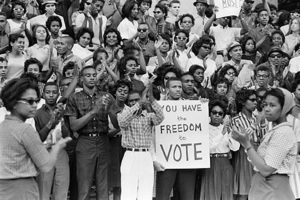
Image by:google.com
In an era of political polarization and fiscal austerity. Policy debates too readily become trapped in a binary of either universal responses or targeted solutions.Universal responses enjoy a degree of legitimacy in a diverse and pluralistic society.But they may also be viewed as unaffordable and overly ambitious. While also inadequate at helping those most in need. Therefore, the most marginalized people are often the most skeptical of ostensibly universal policies.But by targeting a particular group, these approaches are often viewed. As unfairly helping one group over another. Seeding hostility and resentment.
Black History Month Celebrating in US:
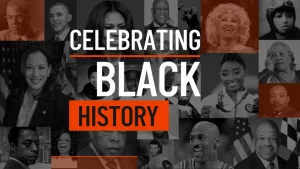
Image by:nbcsandiego.com
The roots of Black History Month trace back to 1926, when historian Carter G. Woodson established “Negro History Week.” Chosen to coincide with the birthdays of Abraham Lincoln and Frederick Douglass.This initiative aimed to counter the marginalization of Black history in traditional narratives. By 1976, President Gerald Ford officially designated February as National Black History Month, solidifying.Its importance on the national calendar.And that once the minority population of a given community reaches a concentration greater than.They can tolerate, whites abandon the community, which quickly becomes all black.
Today Black History Month:
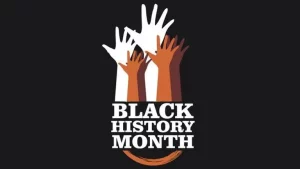
Image by:wcti12.com
Since the first Negro History Week in 1926, other countries have joined the United States. In celebrating Black people and their contribution to history. And also culture including Canada, the United Kingdom, Germany, and the Netherlands.Today Black History Month continues the discussion of Black people and their contributions. Through activities such as museum exhibits and film screenings. And by encouraging the study of achievements by African Americans year-round.
Conclusion:
In the early 20th century, historian Carter G. Woodson chafed at the world’s silence on Black achievement. In a racist society that mischaracterized Black people and overlooked their contributions. He worked tirelessly to tell the world about their rich history. Woodson wanted the world to know about the complexity of the historical lives of people of African descent.Embracing diversity is not just about recognizing differences..And looking towards the future. We can create a society where diversity is not just accepted but embraced wholeheartedly. Together, we can build a more inclusive and equitable world for generations to come.
Jobs and education
Why Assignments Wallah Is the Most Trusted Assignment Help Platform

Introduction
Today, students often struggle to handle assignments, exams, and personal responsibilities. With so much pressure, getting reliable help is important. Assignments Wallah is a trusted platform that offers assignment help for many subjects and academic levels. With expert guidance, on-time delivery, and high-quality work, it helps students succeed and reduces stress. This article explains why Assignments Wallah is a dependable choice for students.
Understanding Assignments Wallah
Assignments Wallah is an online platform that helps students with their academic tasks. It connects students with professional experts who know many subjects and academic formats. The platform is easy to use, reliable, and keeps student information private.
- Expert Tutors: Assignments Wallah has experienced tutors with the right qualifications. They provide accurate, well-researched, and plagiarism-free assignments.
- Wide Range of Subjects: The platform covers many subjects like engineering, management, arts, science, and commerce. Students can get help with essays, research papers, case studies, programming, and more.
- Flexible Academic Assistance: Students get customized help based on their needs, deadlines, and academic guidelines.
Rise of Assignments Wallah
Assignments Wallah has become one of the most trusted assignment help platforms because of its dedication to helping students succeed. It started with the goal of making academic life easier for students who struggle with heavy workloads and tight deadlines. Over the years, it has grown steadily, earning the trust of thousands of students across different educational levels. Its rise is also due to positive word-of-mouth and consistent delivery of high-quality assignments. Today, Assignments Wallah is recognized not just as an assignment help provider but also as a reliable partner in academic success.
Features That Make Assignments Wallah the Most Trusted Platform
Assignments Wallah has built a strong reputation among students due to several key features that set it apart from other assignment help platforms.
1. Timely Delivery
Meeting deadlines is one of the most critical factors in academic success. Assignments Wallah ensures that all assignments are delivered on time, allowing students to submit their work without stress. The platform also provides real-time updates on assignment progress.
2. High-Quality Work
Quality is a top priority at Assignments Wallah. Each assignment undergoes thorough research, proper referencing, and multiple checks for errors. The platform guarantees that every solution is original, accurate, and adheres to academic standards.
3. Plagiarism-Free Solutions
Plagiarism can severely affect a student’s academic record. Assignments Wallah guarantees 100% plagiarism-free assignments. Every document is checked using advanced plagiarism detection tools to ensure originality.
4. 24/7 Customer Support
Academic challenges can arise at any time. Assignments Wallah offers round-the-clock customer support to assist students with queries, assignment progress updates, or any issues they might face. The friendly support team ensures that students feel supported throughout their academic journey.
5. Affordable Pricing
Assignments Wallah provides premium academic support at competitive prices. The platform understands student budgets and offers flexible payment options without compromising on quality. Special discounts and offers make professional assignment help accessible to everyone.
How Assignments Wallah Supports Academic Excellence
Assignments Wallah goes beyond just completing assignments. The platform focuses on helping students understand concepts, improve writing skills, and enhance overall academic performance.
1. Subject Expertise
The experts at Assignments Wallah have in-depth knowledge in their respective fields. This ensures that students receive accurate explanations and high-quality solutions that reflect a deep understanding of the subject matter.
2. Step-by-Step Guidance
Assignments Wallah often provides step-by-step solutions, allowing students to learn while completing assignments. This educational approach helps students develop problem-solving skills and improves their understanding of complex topics.
3. Detailed Research and References
Assignments Wallah emphasizes thorough research and proper citation. Assignments are supported with credible sources, references, and examples, ensuring that students submit academically strong work that meets university standards.
4. Personalized Solutions
Every student has unique requirements, and Assignments Wallah caters to individual needs. Whether a student needs help with formatting, topic selection, or creating original content, the platform provides personalized support to ensure satisfaction.
Benefits of Choosing Assignments Wallah
Assignments Wallah offers many benefits that make it popular among students. First, it saves students a lot of time and effort by providing ready-to-use, well-researched assignments. Second, it helps reduce stress and anxiety, especially during exams or submission deadlines.
Third, it improves learning because students can study the solutions and understand the concepts better. The platform also provides support for different subjects, academic levels, and types of assignments. Overall, it ensures students can perform well without feeling overwhelmed. Choosing Assignments Wallah offers several advantages for students:
1. Reduced Academic Stress
By providing expert assistance and timely solutions, Assignments Wallah helps students manage their workload effectively, reducing stress and anxiety associated with academic pressure.
2. Improved Grades
High-quality assignments with proper research, formatting, and presentation can significantly improve academic performance. Students who use Assignments Wallah often experience better grades and improved understanding of their subjects.
3. Learning Support
Assignments Wallah doesn’t just complete assignments; it acts as a learning partner. Students gain insights into concepts, writing techniques, and problem-solving methods that help them in future academic tasks.
4. Flexible and Reliable Service
The platform is available 24/7, making it convenient for students across different time zones. Its reliable service ensures that students can depend on professional support whenever needed.
How to Use Assignments Wallah
Using Assignments Wallah is easy. Here’s how:
- Sign Up: Make an account on the platform.
- Submit Assignment Details: Enter the subject, topic, word count, format, and deadline.
- Choose an Expert: Pick a tutor based on their experience and expertise.
- Track Progress: Follow updates on your assignment in real time.
- Receive Assignment: Get your completed work on time, check it, and ask for revisions if needed.
Future of Assignments Wallah
The future of Assignments Wallah looks bright as more students seek reliable academic help. The platform has the potential to expand its services by offering live tutoring, interactive study materials, and subject-specific experts.
It can also adopt advanced technology to provide faster support and personalized solutions. By continuing to focus on quality, trust, and student satisfaction, Assignments Wallah is likely to remain a leading choice for assignment help and become an even stronger partner in students’ academic journeys.
Conclusion
Assignments Wallah is a trusted assignment help platform. It provides high-quality, plagiarism-free work on time for many subjects. With expert tutors, 24/7 support, and personalized guidance, it helps students understand difficult concepts and improve their grades. Affordable prices, flexible services, and a focus on excellence make Assignments Wallah a reliable partner for students who want academic success while managing stress and workload.
For more information, visit us.
Jobs and education
Assignment Help Australia: A Comprehensive Guide for Students

Introduction
Studying in Australia can be exciting and challenging at the same time. Students face pressure from deadlines, complex assignments, and the need to maintain good grades. With the increasing competition in universities, managing assignments on time while maintaining quality can become overwhelming. This is where assignment help services in Australia come into play. These services provide professional support, guidance, and resources to students, making academic life easier and less stressful. Understanding how to use these services effectively can boost learning and help students achieve academic success.
Why Students in Australia Need Assignment Help
Australian universities are known for their high academic standards. Students often struggle to meet these standards due to several reasons:
1. Time Management
Many students juggle part-time jobs, social life, and academic responsibilities. Meeting assignment deadlines can become challenging without proper time management.
2. Complexity of Topics
Some subjects, especially in science, engineering, and business, require deep understanding and research. Students may need expert guidance to complete assignments correctly.
3. Language Barriers
International students often face difficulties with English writing skills. Professional assignment help can improve language quality and ensure proper grammar, structure, and style.
4. Stress and Mental Health
Constant pressure to complete assignments can affect mental health. Assignment help services reduce stress by offering timely and professional assistance.
Types of Assignment Help Services in Australia
Assignment help services cover a wide range of academic tasks. Some common types include:
1. Essay Writing
Essays are a common part of Australian curriculum. Professional writers assist in creating well-researched, plagiarism-free essays with proper structure and references.
2. Research Papers
Research papers require in-depth study and analysis. Assignment help experts guide students in finding reliable sources, conducting research, and presenting findings logically.
3. Case Studies
Case studies test students’ understanding of practical scenarios. Expert help ensures accurate analysis, relevant examples, and professional formatting.
4. Dissertation and Thesis Help
Writing a dissertation or thesis is a long and complex process. Assignment services provide guidance on topic selection, research methodology, data analysis, and final writing.
5. Homework and Online Assignments
Many students struggle with daily homework or online submissions. Assignment help services provide solutions that save time and maintain quality.
Benefits of Using Assignment Help Services

Image by: Yandex.com
Using professional assignment help services comes with several advantages for students:
1. Improved Grades
Expert guidance ensures that assignments meet academic standards, helping students score better marks.
2. Saves Time
Students can focus on other tasks, exams, or personal activities while experts handle assignments efficiently.
3. Original and Plagiarism-Free Work
Professional services guarantee unique content with proper citations and references, avoiding plagiarism issues.
4. Learning Opportunity
By reviewing expert-written assignments, students can learn proper writing techniques, research methods, and formatting styles.
5. 24/7 Support
Many assignment help services in Australia offer round-the-clock support, assisting students even during emergencies.
How to Choose the Right Assignment Help Service
Selecting a reliable service is crucial to ensure quality work. Here are some tips:
1. Check Reviews and Testimonials
Look for feedback from other students who have used the service. Positive reviews indicate credibility and quality.
2. Expert Writers
Ensure the service has experienced writers in your subject area. Subject knowledge is essential for high-quality assignments.
3. Plagiarism-Free Guarantee
Verify that the service provides original work and uses plagiarism detection tools.
4. Timely Delivery
Deadlines are critical in academic work. Choose a service that guarantees on-time submission.
5. Affordable Pricing
Compare pricing with other services to find one that fits your budget without compromising quality.
Tips for Getting the Most Out of Assignment Help
Even when using professional help, students can take steps to benefit fully:
- Provide clear instructions and assignment requirements.
- Communicate with the writer if clarification is needed.
- Review the final assignment to ensure it meets expectations.
- Learn from feedback to improve your skills for future assignments.
- Use assignment samples as a reference for your own writing.
Common Mistakes to Avoid
While assignment help is valuable, students should avoid common mistakes:
- Relying entirely on external help and ignoring personal learning.
- Not checking the work for plagiarism or errors.
- Waiting until the last minute to seek help.
- Sharing confidential login or personal information with unreliable sources.
Avoiding these mistakes ensures that assignment help services enhance learning rather than create dependency.
Online vs. Offline Assignment Help
In Australia, students can choose between online and offline assignment help services.
Online Services
- Available 24/7 and accessible from anywhere.
- Quick communication with writers.
- Suitable for urgent deadlines.
Offline Services
- In-person guidance and mentoring.
- Personalized attention and workshops.
- Limited by location and working hours.
Both options have pros and cons, and students can choose based on convenience, urgency, and type of assignment.
Cost of Assignment Help Services in Australia
The cost varies depending on the complexity, word count, and deadline. On average:
- Essays: AUD 30 – AUD 80 per page
- Research Papers: AUD 50 – AUD 120 per page
- Dissertations: AUD 100 – AUD 250 per page
Many services offer discounts for bulk orders or first-time users, making them affordable for students on a budget.
Conclusion
Assignment help in Australia provides a valuable support system for students struggling with academic tasks. By choosing reliable services, students can save time, reduce stress, and improve grades while learning essential research and writing skills. Understanding the types of services, benefits, and best practices ensures that students make the most of professional guidance without compromising personal learning. Whether it is essays, research papers, case studies, or dissertations, assignment help services are a practical solution for students aiming to excel academically while maintaining balance in their personal and professional lives.
Jobs and education
Top Drive Driving School Teaches Safe Driving Practices Behind Wheel

Introduction
Learning to drive is an exciting milestone, but it also comes with responsibilities. Safe driving is not just about knowing the rules of the road it is about building habits that prevent accidents and protect lives. Top Drive Driving School has become a trusted name for teaching safe driving practices to beginners and experienced drivers alike. With professional instructors, practical lessons, and a focus on real-world scenarios, the school helps students develop confidence and responsibility behind the wheel. In this article, we explore how Top Drive Driving School shapes safer drivers and prepares them for the challenges of modern roads.
Driving safely is not just something we do; it’s the main reason we learn how to drive. You have a duty to everyone on the road, not just yourself, every time you make a turn, stop, or change lanes. That’s why Top Drive Driving School puts safety first in everything it teaches. Every lesson, from your first ignition start to your last practice drive, is about building the habits that will keep you safe.
Why Safe Driving Matters
Safe driving is essential for protecting yourself, passengers, and other road users. According to traffic safety studies, human error is a leading cause of accidents. By learning proper driving techniques, drivers can:
- Reduce the risk of accidents
- Improve reaction times in emergencies
- Follow traffic rules correctly
- Develop defensive driving skills
- Build confidence in complex traffic situations
Top Drive Driving School emphasizes these points in every lesson, ensuring students understand the consequences of unsafe driving.
Professional Instructors Make a Difference
One of the key factors that set Top Drive Driving School apart is its team of professional instructors. These instructors are not just skilled drivers they are trained educators who know how to teach students effectively. Some benefits of professional instructors include:
- Personalized guidance tailored to each student
- Patience and support for nervous or hesitant learners
- Expert feedback on driving habits
- Knowledge of local traffic rules and regulations
- Techniques for handling different weather and road conditions
Instructors at Top Drive Driving School focus on creating a safe learning environment where students can make mistakes, learn from them, and build confidence.
Top Drive Driving School Teaches Safe Driving Practices Behind the Wheel

Image by: Yandex.com
1. Learning the Basics Before Driving on Busy Roads
Being ready is the first rule of safety. Students learn how to do the basics perfectly—starting, stopping, steering, and signaling—before they drive on busy roads. You do each move over and over until it becomes second nature. The teachers at Top Drive Driving School never rush this step. They think that drivers who are confident and alert can handle anything that comes their way if they have a strong foundation.
2. How important it is to be aware of your surroundings
A lot of new drivers are so focused on their cars that they forget to pay attention to the road. Top Drive teachers fix that right away. Students learn to look in mirrors every few seconds, check their blind spots, and think about what could go wrong. Students learn how to think like professionals by learning how to read traffic flow, pedestrians, and how other drivers act.
3. Control of speed and safe following distances
One of the main reasons for accidents is tailgating. That’s why Top Drive stresses the “3-second rule,” which says that in normal conditions, you should keep at least three seconds between you and the car in front of you. Teachers also show students how to change the distance between them and the car in front of them when it’s raining, foggy, or there is a lot of traffic. Drivers have more time to react calmly to surprises when they know how to control their speed and space.
4. Mindset for Defensive Driving
Every student learns that being right doesn’t always mean being safe. When you drive defensively, you get ready for other people’s mistakes as well as your own. Instructors use real-life examples and simulations to show how to stay calm when there are distractions, aggressive drivers, or sudden lane changes.
Students don’t panic anymore; they just check, guess, and respond.
5. Being ready for an emergency
Even the most careful drivers can have accidents. Top Drive teaches students how to handle those rare situations with real-life drills. For example, they learn how to brake safely when they skid, what to do if a tire bursts, and how to stay in control when the weather changes. This kind of emergency training gives students a sense of calm and readiness that lasts a lifetime.
6. Training for Nighttime and Bad Weather
It feels very different to drive at night or in heavy rain. Beginners can easily get confused when visibility and glare are low. That’s why Top Drive Driving School has special lessons for these kinds of situations. Students learn how to change headlights, read reflective signs, and keep their visibility up, which gives them the confidence to deal with real-life problems even when it’s dark.
7. Be nice to people walking and biking
A good driver respects everyone on the road. Teachers stress the importance of being aware of crosswalks, school zones, and the right of way for cyclists. Students learn how to be polite and patient, which is an important part of road safety that stops a lot of accidents every year.
In conclusion
Safety isn’t just a chapter in Top Drive’s curriculum; it’s the main focus. Top Drive Driving School turns students into responsible, polite, and alert drivers by using real-world simulations, expert teachers, and a calm teaching style.
Visit aaacardrivingschool.com today if you want to learn how to drive safely, not just pass a test. When safety comes first, confidence naturally follows.
-
Business2 years ago
Cybersecurity Consulting Company SequelNet Provides Critical IT Support Services to Medical Billing Firm, Medical Optimum
-
Business2 years ago
Team Communication Software Transforms Operations at Finance Innovate
-
Business2 years ago
Project Management Tool Transforms Long Island Business
-
Business2 years ago
How Alleviate Poverty Utilized IPPBX’s All-in-One Solution to Transform Lives in New York City
-
health3 years ago
Breast Cancer: The Imperative Role of Mammograms in Screening and Early Detection
-
Sports3 years ago
Unstoppable Collaboration: D.C.’s Citi Open and Silicon Valley Classic Unite to Propel Women’s Tennis to New Heights
-
Art /Entertainment3 years ago
Embracing Renewal: Sizdabedar Celebrations Unite Iranians in New York’s Eisenhower Park
-
Finance3 years ago
The Benefits of Starting a Side Hustle for Financial Freedom






























